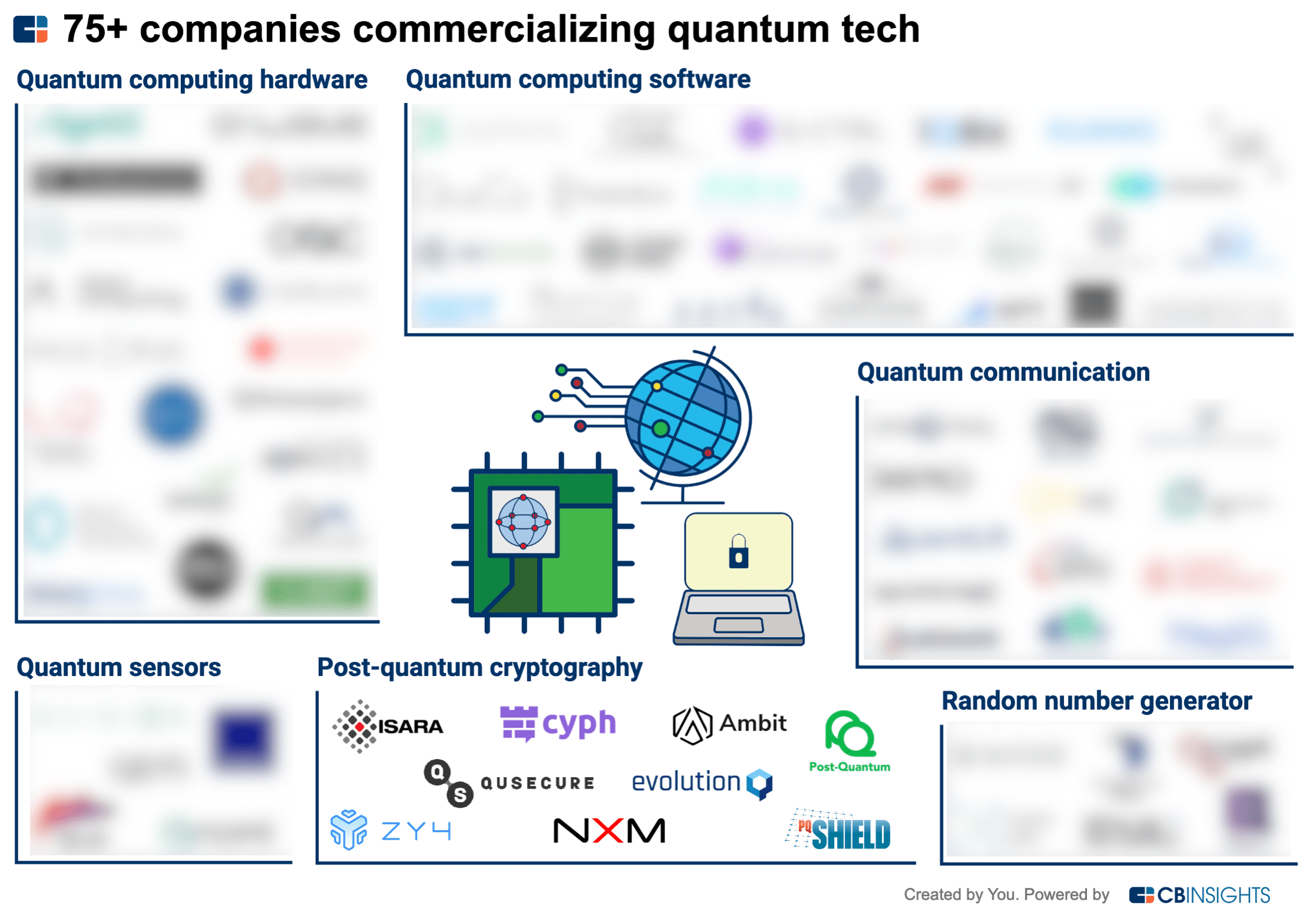Post-Quantum Cryptography's Billion-Dollar Market: Timelines And Technological Advancements

Table of Contents
The Urgent Need for Post-Quantum Cryptography
Current encryption algorithms, such as RSA and Elliptic Curve Cryptography (ECC), which underpin much of our digital security infrastructure, are vulnerable to attacks from sufficiently powerful quantum computers. These quantum computers, while still under development, pose a significant threat to the confidentiality and integrity of sensitive data across various sectors. The potential consequences are severe.
- Data breaches and financial losses: A successful quantum attack could lead to massive data breaches, resulting in significant financial losses for businesses and individuals.
- Compromised national security: Governmental and military communications rely heavily on encryption. Quantum computing could compromise national security by decrypting sensitive information.
- Disruption of critical infrastructure: Power grids, transportation systems, and other critical infrastructures rely on secure communication protocols. A quantum attack could cause widespread disruption.
- Erosion of public trust in digital systems: Widespread breaches caused by quantum computing could severely erode public trust in online systems and digital transactions.
The need for quantum-resistant cryptography is not a future concern; it's a present imperative. The threat is real, and the consequences of inaction could be catastrophic. We need to transition to post-quantum cryptography urgently to maintain a secure digital world.
Technological Advancements in Post-Quantum Cryptography
Several different approaches are being explored in the development of PQC algorithms. Each approach offers unique strengths and weaknesses:
- Lattice-based cryptography: This approach offers high performance and is adaptable to a wide range of applications. Algorithms like CRYSTALS-Kyber, selected by NIST for standardization, exemplify its strength.
- Code-based cryptography: Code-based cryptography boasts strong security proofs based on well-studied mathematical problems. However, it's generally slower than lattice-based methods. McEliece, another NIST candidate, falls into this category.
- Multivariate cryptography: This approach offers efficient signature schemes but can be complex to manage keys.
- Hash-based cryptography: These methods provide one-time signatures, offering strong security but limited usability due to their reliance on one-time use.
- Isogeny-based cryptography: Isogeny-based cryptography offers high security with relatively small key sizes, making it attractive for resource-constrained devices. SIKE, while recently broken, highlighted the ongoing research in this area.
Key algorithms like CRYSTALS-Kyber (key encapsulation), FALCON (digital signatures), and SPHINCS+ (digital signatures), are currently under consideration for standardization by the National Institute of Standards and Technology (NIST), a crucial step in driving widespread adoption.
Market Timelines and Adoption Strategies
The timeline for complete standardization and widespread adoption of PQC is a critical factor influencing market growth. NIST's standardization process, while progressing, is a multi-year undertaking. We can expect a phased rollout as different algorithms gain widespread acceptance.
- NIST standardization process and expected completion dates: NIST's post-quantum cryptography standardization effort is crucial for establishing interoperability and confidence in the new algorithms. The process is ongoing, with several algorithms already selected for standardization.
- Government initiatives and funding for PQC research: Governments worldwide are investing heavily in PQC research and development, recognizing the importance of securing their digital infrastructure.
- Industry adoption strategies and migration plans: Businesses are developing migration plans to incorporate PQC into their systems, recognizing the long-term security implications. This often involves phased rollouts and significant investment in new infrastructure.
- Market forecasts and investment opportunities: The PQC market is expected to experience significant growth in the coming years, presenting substantial investment opportunities for technology companies and investors.
The Role of Standardization in Driving PQC Adoption
Standardization is paramount for ensuring interoperability between different systems and devices using PQC. Without standardization, a fragmented landscape of incompatible algorithms would hinder widespread adoption. NIST's standardization effort is key to establishing a common set of secure and efficient algorithms, fostering trust and accelerating the transition to a post-quantum secure world.
Security and Implementation Challenges
While PQC offers enhanced security against quantum attacks, several implementation challenges must be addressed:
- Key management strategies for PQC: Managing keys securely is crucial. New key management infrastructure will likely be required to support the unique characteristics of PQC algorithms.
- Performance optimization techniques: Some PQC algorithms can be computationally more intensive than their classical counterparts. Optimizations are necessary to minimize performance overhead.
- Integration with legacy systems: Integrating PQC into existing systems can be complex and costly, requiring careful planning and testing.
- Secure implementation practices: Secure coding practices are essential to prevent vulnerabilities that could compromise the security of the entire system.
Conclusion
The billion-dollar market for post-quantum cryptography is rapidly expanding, driven by the urgent need to protect against the threat of quantum computing. Technological advancements are paving the way for the widespread adoption of quantum-resistant algorithms, although significant challenges remain regarding standardization, implementation, and integration. Understanding the timelines and technological advancements in post-quantum cryptography is crucial for businesses, governments, and individuals alike. Proactive planning and investment in post-quantum cryptography solutions are essential to safeguard digital assets and maintain a secure digital future. Don't wait until it's too late; start exploring the solutions available in the field of post-quantum cryptography today.

Featured Posts
-
 Recent Obituaries Local Residents Who Passed Away
May 13, 2025
Recent Obituaries Local Residents Who Passed Away
May 13, 2025 -
 Will Trump Tariffs Return Assessing The Economic Impact On Europe
May 13, 2025
Will Trump Tariffs Return Assessing The Economic Impact On Europe
May 13, 2025 -
 Charlotte Hornets Host Free Nba Draft Lottery Party
May 13, 2025
Charlotte Hornets Host Free Nba Draft Lottery Party
May 13, 2025 -
 Sky Sports Premier League Hd Your Guide To Pl Retro Football
May 13, 2025
Sky Sports Premier League Hd Your Guide To Pl Retro Football
May 13, 2025 -
 Paso Robles Heat Advisory Temperatures And Safety Tips
May 13, 2025
Paso Robles Heat Advisory Temperatures And Safety Tips
May 13, 2025
